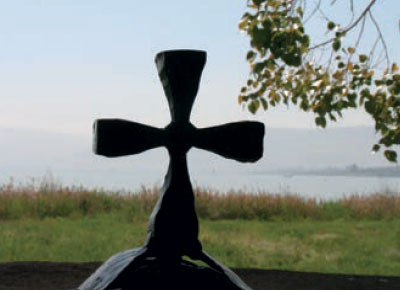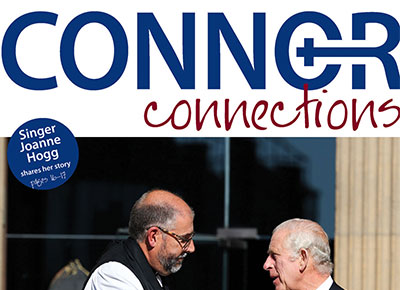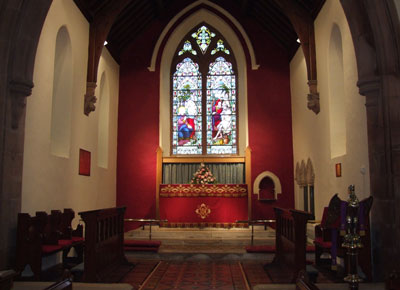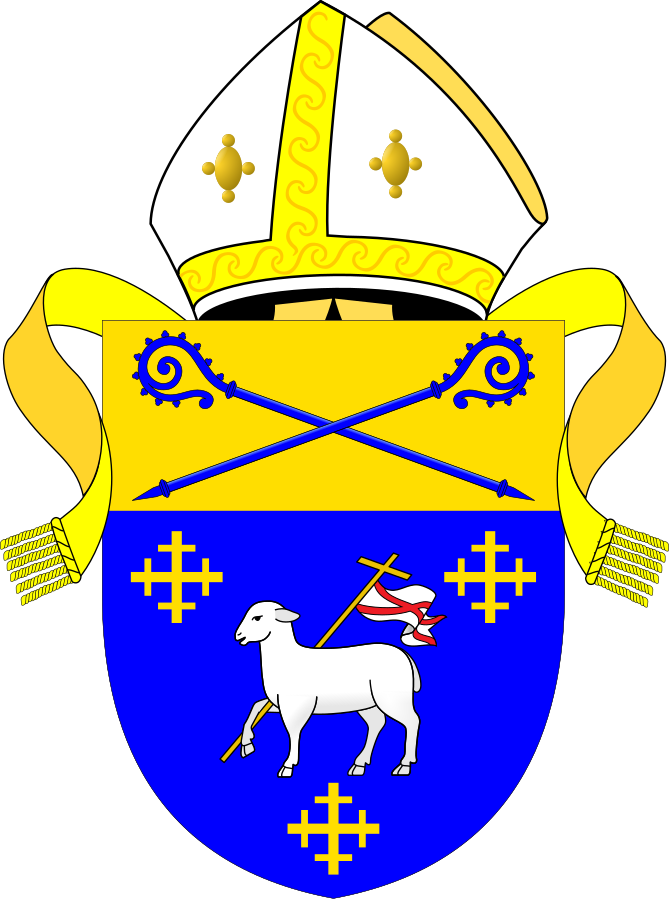Strategy centres on ‘connections’
 A Vision Strategy for Connor Diocese, unveiled at Diocesan Synod on October 13, centres on the word ‘Connections’ – internally, with communities and with the diocese.
A Vision Strategy for Connor Diocese, unveiled at Diocesan Synod on October 13, centres on the word ‘Connections’ – internally, with communities and with the diocese.
The Rev Alan McCann, one of the authors of the strategy, said: “The main aim is that everyone does at least one thing, although no one will be forced or ordered to do something, but it is hoped every parish will see the benefit of it and apply it in an appropriate manner for their context.”
The Vision Strategy is based on the results of a survey of parishes which produced a 93 per cent return.
Referring to the strategy in the first part of his Presidential Address, Bishop Alan said: “Today is a day when we need to look to the future. We need to focus on setting a vision. To rediscover our confidence, not to talk about decline and closure but about incarnation and resurrection.
“I believe that this is an exciting and challenging time to be in leadership but I also believe that God is with us and we journey with Him.”
In the second part of his address, the Bishop introduced a presentation on the Vision Strategy. He said: “As I have reflected upon the role of a bishop, I have been very aware of seeing the church from a different perspective. I have found the words of Steven Croft challenging and exciting.
“’Episcope is not to be simply a stewardship of existing resources and congregations but a dynamic seeking of new opportunities for mission and the establishing of new communities.’
“In the last few months, the attempt to help us on look to the future and discover a shared vision is part of that seeking of new opportunities. We need to recover our confidence and we need to examine how we can best look to the future with excitement and hope. We cannot stand still.”
Bishop Abernethy continued: “I want to encourage us all to celebrate what we have but also to be willing to examine what we need to do to find a shared vision for the future. We have so much to give to each other and to learn from each other and we have the calling to be salt and light in a culture and society that has lost trust in church.”
The Vision Strategy was introduced by Mr Tony McCauley of McCauley Associates, who had facilited the drafting of the Vision Strategy. He described the process of the development of the strategy.
The presentation was picked up by Mr Roy Totton, Glenavy Parish, who said the 93 per cent reply rate from parishes was an indication of a growing sense of belonging in the diocese.
“The diocese has heard very clearly what you have said and each reply is a real contribution to the shaping of the overall vision for the diocese,” Mr Totton said. He highlighted some positive outcomes, including the finding that in the past five years the majority of parishes have tried some form of new programme or ministry; and on average 12,500 people are in church each Sunday in Connor Diocese.
But difficulties common among the majority of parishes were identified – the changing and challenging contexts in which parishes work, for example, and the ‘missing’ 12–30 age group.
Mr Totton told Synod: “Bishop Alan, Church House and Diocesan Council are planning to support, resource and help each parish, help you to establish connections with your context, your community and with each generation, connections that are necessary for more effective ministry and growth.”
The Rev Alan McCann, Holy Trinity, Woodburn, focused on issues which had emerged from each parish return.
Each parish, he said, should understand its own particular context. “The survey itself has enabled you to look at the internal context of your parishes, now we wish to encourage you to seek to understand the external context and the surrounding culture in which you are a witness to the gospel,” Mr McCann said.
Community was another area where change has occurred, he said. Many of those connected to church fellowships no longer live within parish boundaries.
“One thing we all need to take on board is that the attractional model, of opening the church doors and they will come, is no longer viable or relevant,” he said.
Mr McCann went on: “Nothing has changed as quickly as the culture of Northern Ireland over the past two decades. The peace process, devolution, immigration, legislation, secularisation and the ceaseless advances in technology, have occurred at a bewildering pace and the truth is we have struggled to keep up.”
He said almost every parish spoke of an awareness of an increase in secularisation, adding: “The world has always been secular, it is just more open and honest about it today.”
Mr McCann said today’s technology should be harnessed for effective and relevant communication of the gospel.
“We would not tolerate schools teaching our children without computers and such technology. Why are we so reluctant to harness the potential of such technology for the worship and witness of Christ Jesus? We need to address this if we are to be culturally relevant in the 21st Century,” he told Synod.
Finally Mr McCann described one of the most significant changes in culture today as ‘ancient–future faith.’
“Many people, especially the 12–30 age groups that are missing from our congregations are those who seek this ancient–future faith. Ancient in that it has its foundations and roots in history and future in that it is communicated in a post–modern setting through the use of technology that for them is an everyday commodity.”
Looking at the way forward, the Rev Adrian Dorrian told Synod: “One of the most important things to note about this survey and its findings is that they are only as valuable as the response to them.”
He said the diocese could provide resources and opportunities to support what is happening at parish level. Some of these are already in place, he said, adding that diocesan office has provided training on health and safety, human resources and charities legislation. In relation to Diocesan Assessment, the message that parishes are ‘feeling the pinch’ had been heard, and there would be no uplift in this year’s assessment.
Other things the diocese will do to support parishes are to offer prayer support by supplementing the usual Diocesan Cycle of Prayer with focused prayer in response to these findings; to address gaps in resourcing and clergy training; and to build a directory of resources.
“It is clear that there is a phenomenal amount of good practise on offer across our parishes. As we seek to provide training resources, it is clear that in many instances we don’t have to look too far beyond our own people,” Mr Dorrian said.
He concluded with a note of reassurance: “In the midst of the challenges that we have recognised, it remains important to note not only these examples of good practise but also to note that with an almost complete return rate, we all realise that we are not in this alone.”
Mr McCauley summed up the findings so far, describing the response rate as ‘remarkable,’ and paid tribute to the leadership of the project. But he said that he could not yet see evidence of shared vision across the diocese. “Vision is caught when people are attracted and moved by the passion and aspiration of others,” he said. He added that across the parishes feelings of uncertainty, fear and frustration were also evident.
Bishop Abernethy drew Synod to a close with a final endorsement of the Diocesan Vision Strategy. He referred to the disciples on the road to Emmaus. “The best part of this story is that Jesus journeyed with them even though they were confused and uncertain about the future.
“Let’s go forward with Him believing and knowing that he is with us.”
The next phase of the Vision Strategy is presentations and further consultation in each Archdeaconry and a special day of prayer in Lent 2012 for the implementation of the strategy
© Copyright The Church of Ireland Diocese of Connor 2025 | Web Design by LD2.digital




